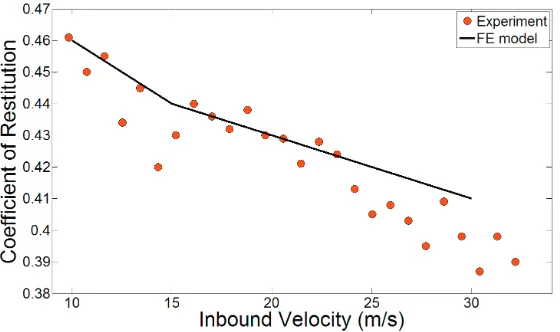Finite element model of a cricket ball impacting a bat
Full text
Figure




Related documents
Uniaxial tensile test experiments have been carried out on standard specimen and hose piece in order to verify finite element models and material properties and also to assess
Finite element error analysis of a zeroth order approximate deconvolution model based.. on a
The actual finite element analyses of impact tests were carried out by a computer code ABAQUS/Explicit [6] using shell element and 3D solid element models.. In shell
To create an anatomically accurate three-dimensional finite element model of the wrist, applying subject specific loading and quantifying the internal load transfer through the
V., “Exploratory Study on the Suitability of an Airbag for an Indian Motorcycle Using Finite Element Computer Simulations of Rigid Wall Barrier Tests,” Proceedings of the 23 rd
The MATLAB output was used to model the rollers using spring elements in a Finite Element (FE) model. The developed FE model was validated by comparison with a
Figure 3.32: Comparison of Fluidity (left plot) with mean value of mod- els that took part in ISMIP–HOM (right plot), for surface velocity x– component plotted against the
In the present problem the numerical simulation of laminar flow in a parallel plate channel for different entrance velocity is analyzed using the finite element method through